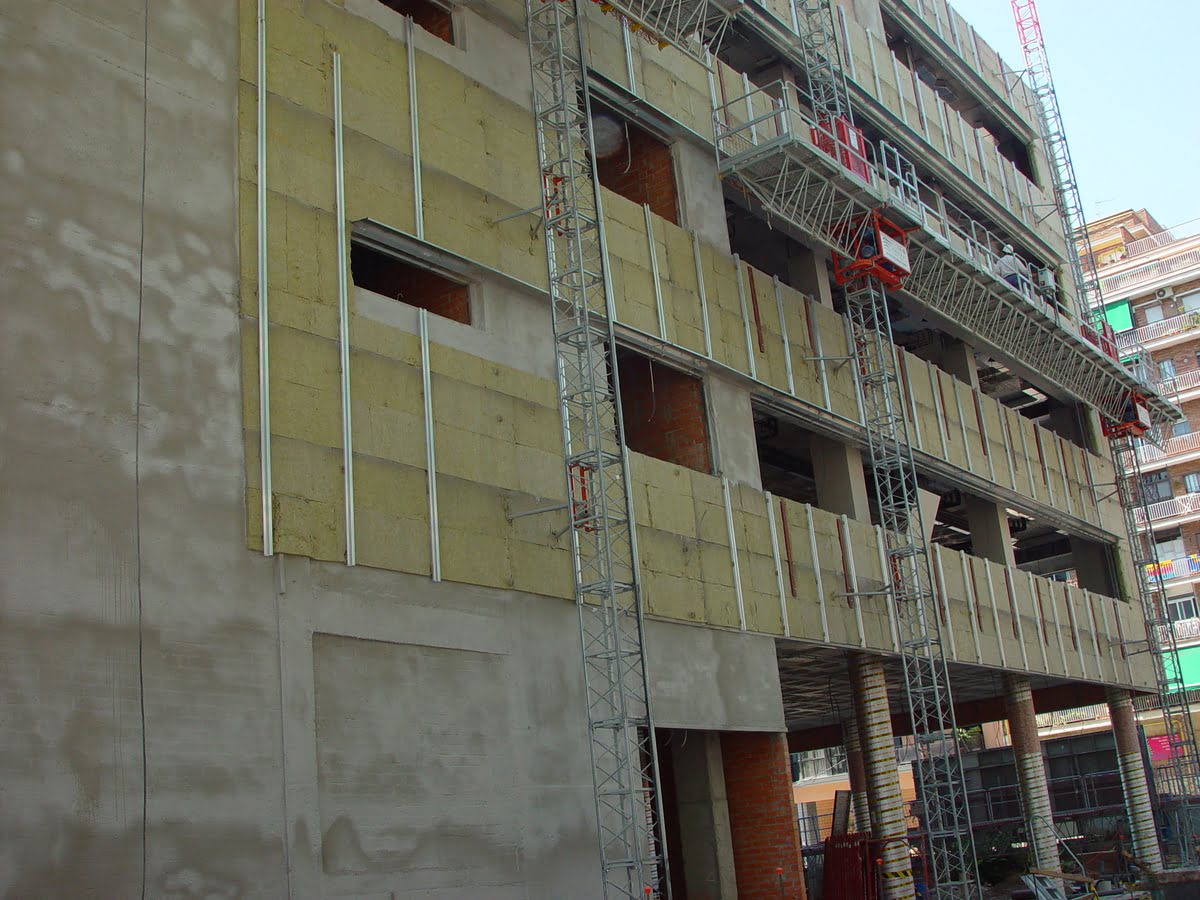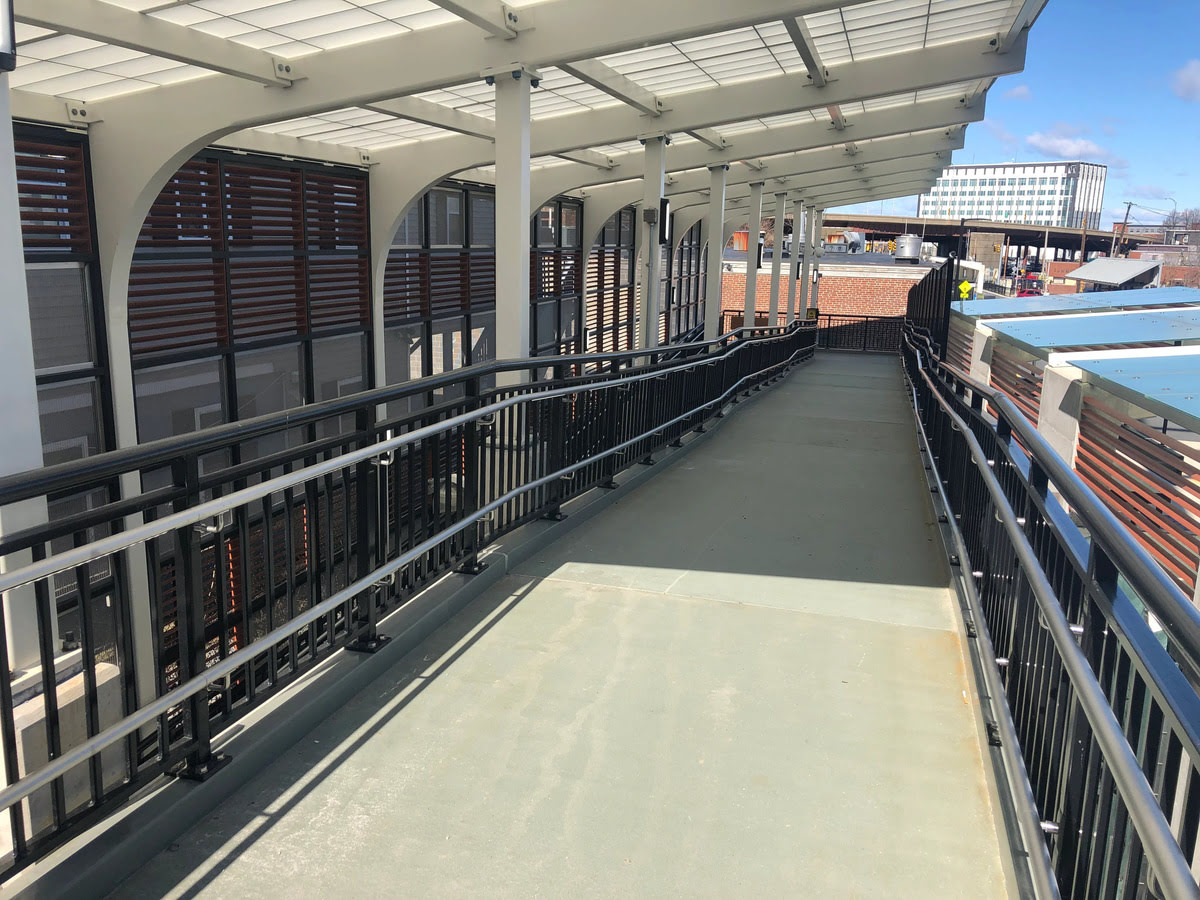Home>diy>Building & Construction>What Does LD Mean In Construction


Building & Construction
What Does LD Mean In Construction
Modified: October 20, 2024
Discover the meaning of LD in construction and how it relates to building-construction. Gain insights into this term and its significance in the construction industry.
(Many of the links in this article redirect to a specific reviewed product. Your purchase of these products through affiliate links helps to generate commission for Storables.com, at no extra cost. Learn more)
Introduction
Welcome to the world of construction, where precision, planning, and execution come together to create magnificent structures that shape our cities and communities. In the vast realm of construction, there are a plethora of terminologies that professionals use to discuss various aspects of a building project, one of which is LD, also known as Liquidated Damages.
In the construction industry, time is of the essence. Delays can cost project owners and stakeholders significant amounts of money, time, and resources. This is where Liquidated Damages (LD) come into play. LD refers to a predetermined amount of money that is agreed upon by the parties involved in a construction contract as compensation for delays in project completion.
The concept of LD is designed to mitigate the potential financial losses that the project owner may incur due to delays in construction. By incorporating LD clauses into construction contracts, both parties can establish clear expectations and incentives for timely project completion.
LD serves as a form of protection for project owners who require completed projects by specified deadlines. It also serves as a mechanism to incentivize contractors and subcontractors to meet those deadlines. This mutually agreed-upon compensation helps maintain project timelines and ensures that all parties involved are protected.
It is worth noting that LD is different from penalty clauses. While penalty clauses aim to punish parties for breaching terms and conditions of a contract, LD focuses on compensating project owners for delays beyond the agreed-upon completion date. The intention behind LD is not punitive but rather to indemnify the project owner for the financial losses incurred due to delays.
Key Takeaways:
- LD, or Liquidated Damages, is a crucial tool in construction contracts, providing financial protection for project owners and incentivizing timely project completion by compensating for delays.
- Mitigating LD occurrence involves proactive strategies such as thorough planning, effective communication, and diligent risk management, contributing to successful project execution and minimizing financial risks.
Read more: What Is An LD In Construction
Defining LD in Construction
LD, or Liquidated Damages, is a contractual provision in the construction industry that establishes the amount of money a contractor or subcontractor must pay to the project owner if they fail to complete the project within the agreed-upon timeframe. It serves as a mechanism to compensate the project owner for financial losses incurred due to delays in construction.
The concept of LD is based on the understanding that delays in construction projects can have significant consequences, both for the project owner and other stakeholders involved. By including LD clauses in contracts, construction professionals can establish a clear understanding of the time constraints and the financial implications of failing to meet those deadlines.
In construction, time is money. Delays can lead to increased costs, missed opportunities, and reputational damage. LD clauses provide a mechanism to allocate the risk of delays appropriately. They ensure that both parties understand their responsibilities and have incentives to complete the project on time.
One of the essential elements of LD is that the damages must be a reasonable estimate of the loss likely to be suffered by the project owner due to the delay. The predetermined amount is typically based on factors such as the size and complexity of the project, potential financial losses, and the impact of the delay on other parties involved.
LD clauses should be carefully drafted to ensure that they are fair and enforceable. They must be clear in their terms and conditions, specifying the amount of damages, the timeframe for completion, and any other relevant provisions.
It is crucial to distinguish between LD and penalties. While LD aims to compensate the project owner for actual financial losses incurred due to construction delays, penalties are designed to punish the defaulting party for non-performance or breach of contract. LD is a more reasonable approach that provides a predetermined, quantifiable amount of compensation for the project owner rather than leaving it up to potential litigation or negotiation.
Overall, LD in construction is a vital tool to manage and mitigate project delays. It encourages timely performance, provides a fair mechanism for compensation, and helps maintain the integrity of the construction industry.
Importance of LD in Construction Projects
The inclusion of Liquidated Damages (LD) clauses in construction contracts serves several important purposes and brings significant benefits to both project owners and contractors. Understanding the importance of LD in construction projects is essential for successful project management and completion.
1. Encourages Timely Completion: LD provisions act as incentives for contractors and subcontractors to complete the project within the agreed-upon timeframe. The potential financial consequences of delays motivate construction professionals to allocate resources efficiently, manage schedules meticulously, and ensure timely project delivery.
2. Risk Allocation: Construction projects involve various risks and uncertainties. By incorporating LD clauses, project owners can transfer the risk of delays to the contractors and subcontractors. It helps to maintain a balanced distribution of responsibilities and incentivizes the parties to proactively address any issues that may arise during the course of the project.
3. Financial Protection: For project owners, LD serves as a form of financial protection. Delays in construction can lead to additional costs, such as extended financing charges, increased labor expenses, and lost revenue opportunities. With LD provisions, project owners have a predefined method of compensating for these financial losses and are not left with the burden of absorbing the costs themselves.
4. Contractual Clarity: LD clauses provide clarity and transparency in construction contracts. They specify the penalties for delays, establish realistic completion timelines, and outline the consequences of non-compliance. This clarity minimizes potential disputes and legal issues that may arise in the event of project delays.
5. Improved Project Management: The presence of LD provisions encourages effective project management. Contractors and subcontractors are motivated to implement rigorous planning, coordination, and control measures to adhere to the agreed-upon schedule. This focus on project management facilitates efficient resource allocation, mitigates potential delays, and enhances overall project performance.
6. Project Reputation: Construction projects are often high-profile endeavors, and timely completion is essential for maintaining a positive reputation. LD clauses help ensure that projects are completed on time, enhancing the reputation of both the project owner and the construction professionals involved. Meeting project deadlines not only benefits the current project but also helps build trust, attract new clients, and foster long-term business relationships.
In summary, the importance of LD in construction projects cannot be overstated. LD provisions incentivize timely completion, allocate risks appropriately, provide financial protection, enhance contractual clarity, improve project management, and contribute to a positive project reputation. By integrating LD clauses into construction contracts, project owners and contractors can mitigate the potential impact of delays and work towards successful project delivery.
Common Examples of LD in Construction
Liquidated Damages (LD) serves as a form of compensation for project owners in the event of construction delays. Their inclusion in contracts allows both parties to establish clear expectations and allocate the financial risks associated with project completion timeframes. Here are some common examples of LD in construction:
- Residential Construction: In residential construction projects, LD may be applied when building a new home or completing a renovation. For example, if a contractor fails to complete the project within the agreed-upon timeframe, the project owner may be entitled to receive a predetermined amount per day as compensation for the delay.
- Commercial Construction: Large-scale commercial construction projects, such as office buildings, shopping centers, or hotels, often involve significant financial investments and strict timelines. LD clauses may be included in these contracts to protect the project owner’s interests. If the contractor exceeds the agreed-upon completion date, they may be liable to pay a specific amount per day until the project is finished.
- Infrastructure Projects: Construction of roads, bridges, and other public infrastructure projects typically have stringent deadlines due to their impact on the community. LD provisions may be utilized to enforce punctuality and assign financial repercussions if completion is delayed. These clauses help ensure that the project is delivered within the required timeframe and minimizes inconvenience to the public.
- Government Contracts: When government entities engage in construction projects, LD clauses are commonly included in the contract. This ensures that taxpayer funds are protected and that government-sponsored projects are completed within a reasonable timeframe. Delays in government projects can have dire consequences, such as disruptions to public services or increased costs, making LD provisions crucial.
- Industrial Construction: LD is also present in industrial construction projects, such as factories, warehouses, and power plants. These projects often involve complex logistics and strict production schedules. LD provisions motivate contractors to adhere to the agreed-upon timeline, minimizing disruptions and ensuring consistent operations once the facility is operational.
- Infrastructure Maintenance and Repair: LD can also be applicable in construction projects involving infrastructure maintenance and repairs. For instance, roadwork or bridge repairs may have strict deadlines to minimize traffic disruptions. LD clauses ensure that contractors complete the work promptly and face financial consequences if they cause avoidable delays.
The specific terms, conditions, and amounts of LD vary depending on the nature and scale of the construction project. It is essential for project owners and contractors to carefully negotiate and document LD provisions to ensure a fair and reasonable distribution of responsibilities and potential financial penalties.
By including LD clauses in construction contracts, project owners can mitigate the financial risks associated with delays, while contractors are incentivized to complete projects efficiently, enhancing overall project success.
LD in construction stands for “Liquidated Damages,” which are a predetermined amount of money that must be paid by the contractor to the client for delays in completing the project. Make sure to understand the LD clause in your construction contract to avoid any financial penalties.
The Process of Calculating LD
The calculation of Liquidated Damages (LD) in construction projects involves a systematic approach to determine the appropriate compensation for project delays. The process of calculating LD requires careful consideration of various factors and follows these general steps:
- Define the Project Timeline: The first step is to establish the agreed-upon project timeline in the construction contract. This includes the start date, completion date, and any intermediate milestones or deadlines. It is crucial to have a clear understanding of the timeframes involved to accurately calculate LD.
- Identify the LD Rate: The LD rate is the predetermined amount to be paid for each day of delay. It is usually a fixed sum agreed upon by both parties during contract negotiation. The rate may vary depending on the nature of the project, its complexity, and the potential financial impact of the delay on the project owner.
- Determine the Delay: To calculate LD, it is necessary to determine the actual delay in completing the project. This can be measured by comparing the agreed-upon completion date with the actual date of completion. It is important to consider any extensions or adjustments to the project timeline due to unforeseen circumstances or change orders.
- Calculate the Number of Delayed Days: Using the determined delay period, the next step is to calculate the number of delayed days. This is usually calculated by subtracting the actual completion date from the agreed-upon completion date, considering any approved extensions or adjustments. The number of delayed days is the basis for the LD calculation.
- Multiply Delayed Days by LD Rate: Once the number of delayed days is determined, it is multiplied by the LD rate to calculate the total amount of LD owed. For example, if the LD rate is $500 per day and there is a delay of 10 days, the total LD amount would be $5,000.
- Review and Validate Calculation: After calculating the LD amount, it is essential to review and validate the calculation for accuracy. Both the project owner and the contractor should verify that the calculations are based on the agreed-upon terms, properly consider any extensions, and accurately reflect the delay in completing the project.
It is crucial to note that the process of calculating LD should be outlined clearly in the construction contract to avoid any ambiguity or disputes. The contract should specify the project timeline, LD rate, method of calculating delayed days, and any provisions for extensions or adjustments.
By following a systematic approach to calculating LD, project owners can ensure a fair and reasonable assessment of delays, while contractors can understand their potential financial obligations in the event of project delays. This process helps maintain transparency, accountability, and contractual clarity in construction projects.
Mitigating LD in Construction Projects
While Liquidated Damages (LD) serve as a form of compensation for project owners in the event of construction delays, there are various strategies and practices that can be implemented to mitigate the risk of LD occurrence. By proactively addressing potential causes of delays, construction professionals can minimize the likelihood of incurring LD. Here are some effective ways to mitigate LD in construction projects:
- Thorough Planning and Scheduling: Proper planning and scheduling are crucial to avoid delays. Utilize project management techniques to establish realistic timelines considering the project’s scope, available resources, and potential risks. Thoroughly analyze the project requirements, develop a detailed construction schedule, and make sure all parties involved are aligned on the timeline.
- Effective Communication and Collaboration: Clear and open communication among all project stakeholders is essential. Maintain regular communication channels, hold progress meetings, and address any emerging issues promptly. Encourage collaboration between the project owner, contractor, subcontractors, and suppliers to improve coordination and minimize potential delays.
- Proactive Risk Management: Identify and assess potential risks that may lead to delays and develop mitigation strategies. Conduct thorough risk assessments, develop contingency plans, and implement measures to address identified risks before they impact the project. Regularly monitor and review risk factors throughout the construction process and adapt the project management approach accordingly.
- Contractor Selection and Qualification: Carefully select contractors and subcontractors with a proven track record of timely project completion. Evaluate their past performance, reputation, and capabilities before entering into contracts. Choose construction professionals who have extensive experience in delivering projects within agreed-upon timelines to minimize the risk of delays and LD.
- Effective Change Management: Changes in project scope, design, or specifications can be a common cause of delays. Implement a robust change management process to evaluate and assess requested changes promptly. Ensure that changes are properly documented, approved, and communicated to all involved parties, minimizing the impact on project timelines and reducing the potential for LD.
- Resource Allocation and Management: Proper allocation and management of resources, including labor, equipment, and materials, are vital to keep the project on track. Develop realistic resource plans, closely monitor resource utilization, and efficiently address any shortages or constraints. Adequate resource planning and management are essential to maintain project progress according to the agreed-upon timeline.
- Regular Progress Monitoring and Reporting: Implement a robust progress monitoring and reporting system to track project milestones and ensure adherence to the schedule. Utilize technology and software tools to facilitate real-time tracking of project progress, identify potential delays early on, and take necessary corrective actions to mitigate their impact.
- Contractual Provisions and Incentives: Aside from LD, consider incorporating contract provisions and incentives that promote timely completion. For instance, bonus clauses can reward contractors for early completion, encouraging them to prioritize timeliness. Clear contractual language and provisions help establish shared expectations and incentivize project completion within the agreed-upon timeline.
By adopting these mitigation strategies, construction professionals can minimize the likelihood of LD occurrence and ensure smooth project execution. Proactive planning, effective communication, risk management, diligent resource allocation, and properly crafted contracts all contribute to successful project completion and reduce the potential for delays and associated LD.
Conclusion
Liquidated Damages (LD) play a significant role in the construction industry, providing a predetermined compensation mechanism for project owners in the event of construction delays. By incorporating LD clauses into contracts, construction professionals can establish clear expectations, encourage timely completion, and allocate the risks associated with project timelines appropriately.
Understanding the importance of LD in construction projects is crucial for both project owners and contractors. LD serves as an incentive for contractors and subcontractors to complete projects on time and within the agreed-upon timeframe. It also provides financial protection for project owners, compensating them for potential losses incurred due to delays.
There are several ways to calculate LD, including defining the project timeline, identifying the LD rate, determining the delay, calculating the number of delayed days, and multiplying them by the LD rate. Following a systematic approach to LD calculations helps ensure accuracy and transparency.
However, the goal for all parties involved should be to minimize the occurrence of LD by implementing effective strategies and best practices. Thorough planning, effective communication, proactive risk management, proper resource allocation, and careful contractor selection all contribute to mitigating the risk of project delays and associated LD.
In conclusion, LD serves as a valuable tool in the construction industry, incentivizing timely completion and protecting the financial interests of project owners. By understanding LD provisions, implementing mitigation strategies, and fostering a collaborative approach, construction professionals can successfully navigate project timelines, minimize the likelihood of LD occurrence, and deliver projects on time and within budget.
Frequently Asked Questions about What Does LD Mean In Construction
Was this page helpful?
At Storables.com, we guarantee accurate and reliable information. Our content, validated by Expert Board Contributors, is crafted following stringent Editorial Policies. We're committed to providing you with well-researched, expert-backed insights for all your informational needs.















0 thoughts on “What Does LD Mean In Construction”